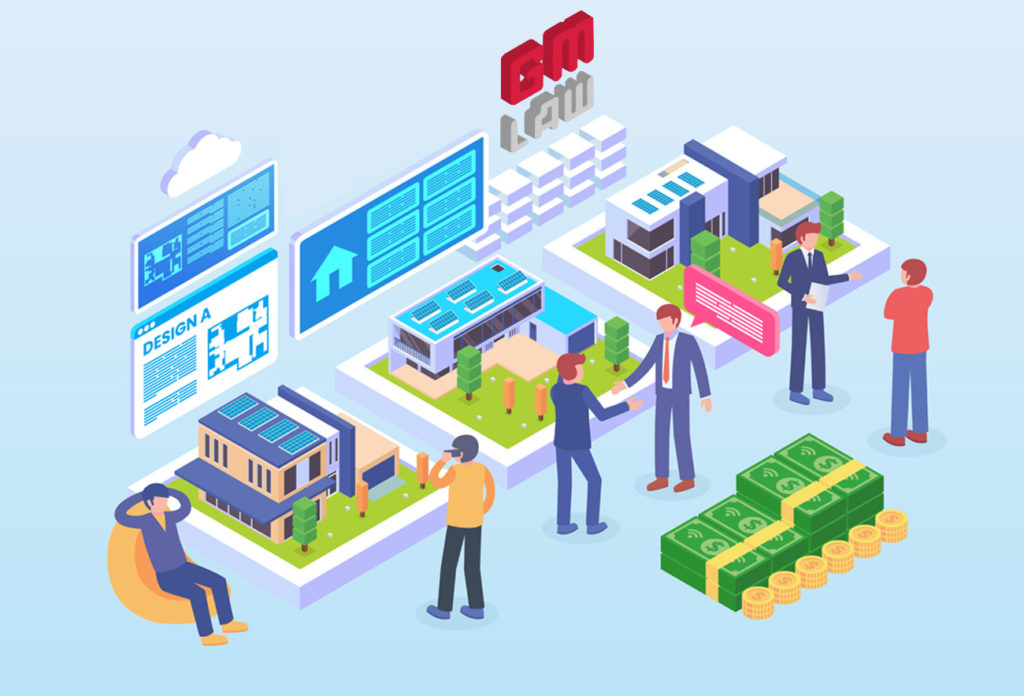In Queensland, an essential step in moving to a different house is transferring the title to the buyer, called the conveyancing process in QLD. To do so, you’d need to choose a conveyancer to help you throughout the house sale conveyancing.
Although property conveyance isn’t a complicated process, many find themselves entangled in it. Here below, we’ll walk you through the conveyancing process step by step.
1. Choose Your Real Estate Agent

If you’ve decided to put your property on the market, it’s essential to do it at the right time and in the most optimal manner possible.
We recommend using a real estate agent instead of doing it yourself.
A competent agent can help you get a fair price for your property and put it on the market at the most opportune juncture.
2. Contact GM Law

At GM Law, you’ll receive optimal legal advice concerning your real estate needs. We know moving can be a stressful and challenging process. You need to verify that the potential buyer can meet the financial demands of the contract. There’s also a need to go over the conveyancing work. We’re ready to help you with all your requirements in this regard to make your transition to a new house as smooth as possible.
Of course, we understand that we are not the only conveyors on the market, but even if you haven’t made a decision about a conveyor yet, you can still contact us via Get in touch form or make a phone call to simply discuss potential options before making a decision. We will be happy to answer your questions.
If you have already made a positive decision about GM Law conveying company, you can fill in the Instant Quote to get more details about our fee, which will vary depending on the value and type of your property.
3. Know Conveyancing Specifics of Queensland

When dealing with legal work, it’s always important to be specific. You might be surprised at some of the things you may find out. For instance, in Queensland, conveyancers cannot own conveyancing firms, and a solicitor must supervise their work if they’re hired for the job.
Since the stages of conveyancing can be complicated and sometimes misleading, it’s wiser to get in touch with expert paralegals that can provide you with advice.
We have a host of such professionals who can make the process much less risky and easier for you!
4. Making an Offer

After you put your property on the market, there will be several open houses or other arrangements set up so that potential buyers can get a good look.
Once they decide that your property is their final choice, they’ll put forward an offer, and the real estate agent will then draw up the contract.
5. Contract Signature

Once you receive the contract from your real estate agent, you have time to review it carefully and go over the various clauses.
When it’s to your satisfaction, both you and the buyer will sign the contract.
6. Cooling-Off Period (For Residential Properties)

Contracts for the sale of residential land in QLD include a cooling-off period. Your real estate agent will inform you about the details. But basically, it’ll cost a quarter of a percentage of the purchase price. This clause stipulates that the parties can reflect for a certain period and see whether they’ve made the right choice. The period designated is five business days.
7. Deposit & Deposit Guarantee Bond

Contracts for the sale of residential property in Qld will require a deposit to be paid and the contract will nominate how much (usually up to 10%) and when it is to be paid. This deposit is usually placed in the real estate agent’s trust account. If cash for the deposit isn’t available, deposit guarantee bonds may be acceptable if this is stated in the special conditions.
This deposit ensures your safety as a buyer since it’ll be used to reimburse you if the buyer doesn’t meet the contract terms.
8. Insure Your House

Accidents don’t call ahead and give you a heads up before they happen.
When you’re selling your house, you must keep it insured until the time of settlement.
9. Transfer Duty
The buyer is responsible for paying the transfer duty. If you are a homebuyer, you can read more about it here.
10. Settlement

In this stage of the process, you’ll be asked to sign a request for discharge of mortgage by the lender. Since the lender can take some days to go through the documents and perform his part, it’s advisable to sign this request as soon as the contract is ready.
Otherwise, you’ll not be paid before the buyer has received the discharge papers.
Settlement is the special day when you receive the payment for your property. The buyer will need to have the discharge papers completed by then to become the property owner.
11. Informing Tenants the House Has Been Sold

If your property has already been rented out, you must contact the tenants and tell them about the sale.
The real estate agent and the buyer must also be consulted on this matter.
In some cases, the buyer may be wanting to move into the property after settlement but may not be entitled to under the terms of the contract if the tenants’ lease hasn’t expired and the tenant hasn’t been given appropriate notice to leave the property.
12. Notice of Sale

The contract of sale is a legal document showing the property has been sold/bought under what circumstances. Another essential document is the transfer, registering the buyer as the property’s new owner at the Department of Natural Resources & Mines.
The real estate agent usually draws up this document and will coordinate the signing of the document. Your conveyancer will facilitate the transfer once the payment has been completed. This process will take place on the settlement day.
Another document drawn up by the buyer’s conveyancer and deposited at the Department of Natural Resources & Mines is the notice of sale. This notice will inform authorities the sale has been completed.
13. Adjustments
The adjustments are fees, taxes, water usage, council rates, and strata levies and are usually payable by the buyer on a pro-rata basis from the day after settlement.
14. Final Inspection

At this time, the buyer needs to make a final inspection of the property they’ve purchased. This is not a building inspection.
The purpose of the inspection is to ensure that the seller has taken reasonable care of the property.
15. Settlement Itself

The conveyancers can perform this part. Your conveyancer will exchange the transfer and in return, will receive the payment and a letter to the real estate agent that allows the release of the deposit.
The lender will also release the mortgage in exchange for the money they’re owed.
16. After Settlement

In this part, your conveyancer will inform the real estate agent that the deal is complete and that the keys can be handed over to the buyer.
In turn, the conveyancer will contact the buyer about the finality of the process and notify them regarding financial details.
Our experts are ready to help you with the conveyance steps and explain how conveyancing works in Brisbane. As you may know, property conveyance in Brisbane can be confusing and convoluted. If you’re selling your house and are looking for a replacement, then you will need to engage a conveyancer to guide you through the legal process. Our solicitors manage this conveyancing process of the selling of a house and the conveyancing process of buying one in a manner to lighten the load on you as much as possible.
GM Law always strives to use modern technologies and values an individual approach to each client. If you are interested in the cost of GM Law’s conveyancing process in Queensland or New South Wales, you can complete the Instant Quote and get individual pricing based on your type of property.


